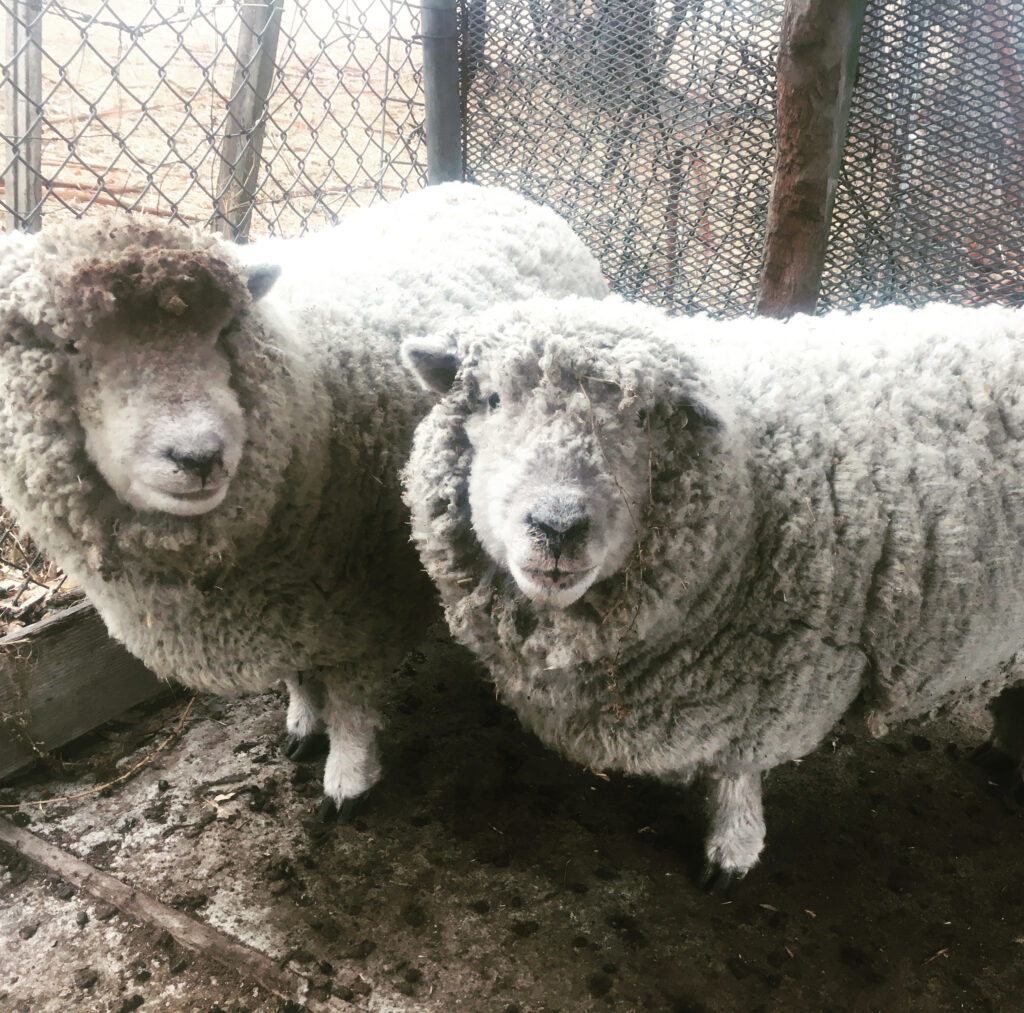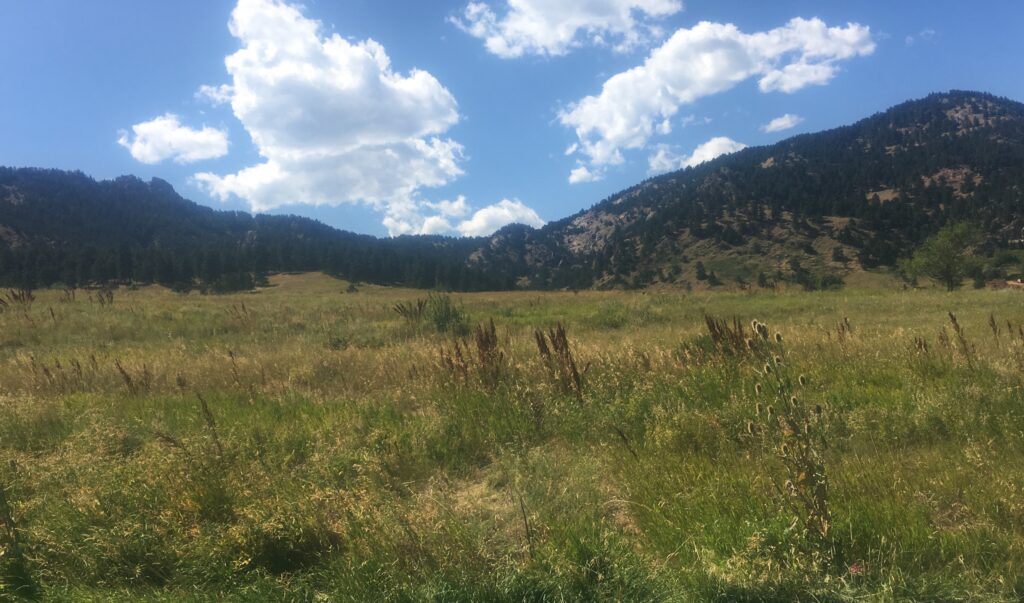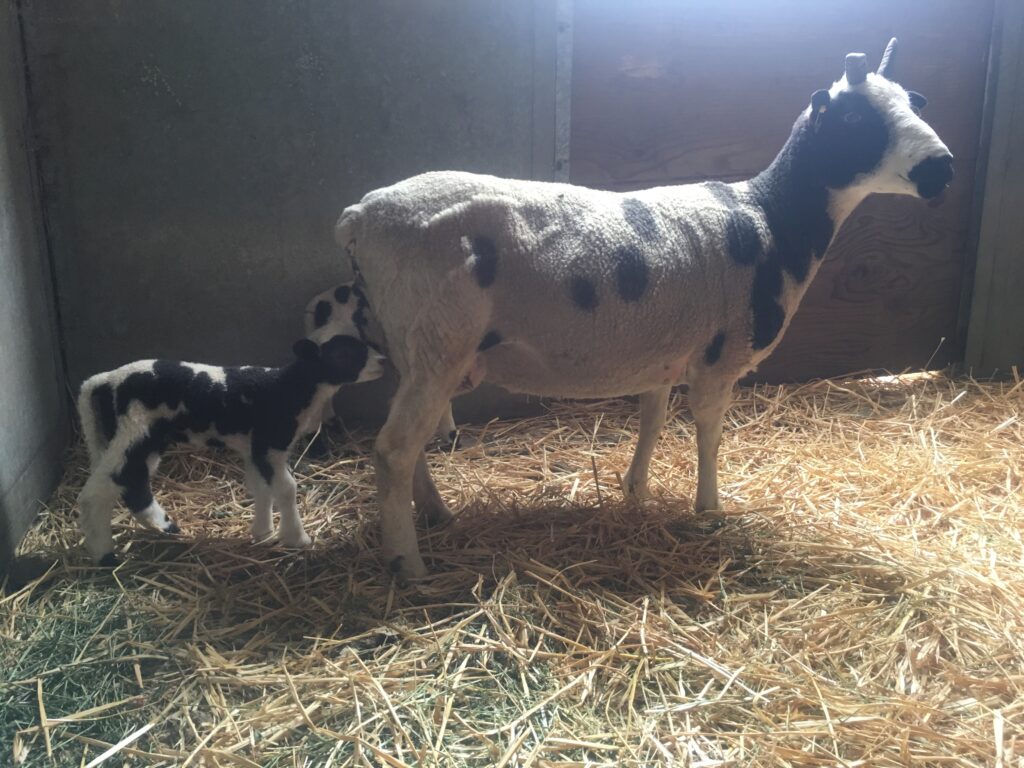It’s 2020, and — when I wasn’t fighting AB5 tooth and nail, to save my business — I took some time over the holidays to figure out a better way to get compensated for the totality of the work I do on shearing jobs. To that end, I have completely overhauled and reworked my pricing for 2020, and added some new services and policies. These are the first major changes I’ve made in over seven years of shearing, and long overdue. I haven’t raised my shearing rates in that time.

New and cherished clients alike, please read this so you can decide whether or not to hire me accordingly.
Super-short version of this post: I have a flat, hourly, on-site rate of $100 no matter what we’re doing that day, whether it’s building a catch pen, teaching a school workshop, or actually shearing. It’s all the same. This is as honest and simple a formula I could create, to reflect what my shearing jobs have actually been like since 2013. The fact is, much of what I actually do is not shearing. I also have two new policies (no more post-job payment, and a new full-sheep policy), and one new service: private and small-group shearing instruction.
2020 Pricing Details
This new flat-rate model includes everything. There is no more customized ranch call based on distance, time, and mileage calculations, and trying to price all that out separately; no more per-head shearing plus per-hoof and/or horn trimming; no more piecemeal anything.
This new model doesn’t change much for most people. A $100/hour flat rate sounds like a lot, but interestingly, when I looked at my shearing spreadsheet from 2018 and 2019, I realized that most of my customers would not see a substantive jump in price. Most folks will see a $25-50 increase (for the first time ever), and a few folks will see an increase of $75, but in the latter cases, I honestly wasn’t charging enough to begin with. Of course, as a self-employed person, about 50% of anything is taxes.
I charge by the quarter hour (in 15-minute increments). This way, if we use only 15 minutes of one hour, you don’t get charged for a full hour.
This pricing model does not apply to commercial shearing, which is not most of my shearing. That is an entirely different context: $3-5/head until however many of us finish shearing the 3,000 or 10,000 or however many sheep.
Why I Changed My Pricing Model
I write this less to explain myself (never feel obligated to explain the decisions you need to make for your business, folks), than to shine some honesty and transparency on what small-flock shearing and running a business is really like.
My prior pricing was extremely inefficient: it required a lot of time and ultimately produced little difference. I had a minimum charge of $150, but spent unpaid hours on the phone, on email, and driving, and then created custom estimates that considered the entire time a job would probably take, including drive time, set up, break down, and so on.
It took a lot of time to put together all those custom quotes, broken down by every tiny thing and going back and forth, but in the end, when it all shakes out, everybody ends up paying about the same anyway.
And those were just the estimates, which rarely matched reality. Now, before you think I’m complaining, I am not: Unpredictability is simply the way of sheep things. It’s like the Law Of Sheep — and, by the way, has done wonders for my willingness to roll with the punches. I no longer believe I can control anything or anybody; the best I can do is guide it sometimes, and it’s really only a matter of how gently or roughly I do so.
Oftentimes, I’d shear a few sheep, and then maybe some lost goats showed up from somewhere, or perhaps the power went out so I had to find a fuse box, or a fire started and shearing day turned into load-up-and-run-like-hell day, and so on and so forth, according to the Law Of Sheep.
In order to have a business, and stay in business (which the federal and California state governments make harder by the year), I have to price my work fairly to account for all of it, and lo, I have struggled with how to do that. I have struggled because a fair price requires admitting a not fun, not cool thing, which is that actual shearing is not what I do most of the time.
Shearing is the fastest (and best, and most fun, and SUPER RAD) part, in the way that 90% of life is just showing up, and 10% is shearing. On most jobs, for instance, I spend far more time driving and getting set up than I do actually shearing. (This is why I’ve come to love commercial jobs, because all we do is shear all day, yeehaw and AMEN!)
What am I doing for all these hours when I am not shearing? I may be effectively building a permanent shearing area, especially on my initial visits to new customers: drilling and hanging a 2×4 at the right height and correct distance from a wall for my machine; buying and mounting some big lights to shine on the shearing floor in a dark barn; all sorts of things.
I have built pens, because the dimensions I give for a “small pen,” into which I can reach and easily grab a sheep, is not the same size as the “small pen” OTHER people have in mind, and then I’m running around in, say, a rather large horse pen burning all my energy — and risking injury — to catch and wrassle sheep.
I may skirt, grade, bag and/or bale fleeces. I have provided a lot of ad hoc instruction on humane sheep handling: how to flip sheep gently (a very useful thing, when you need to get a good look at certain areas); how to halter break sheep; how to shear sheep on a milking stand. I have stitched up a variety of animals that had been bitten by dogs, or that got hung up on fence, since I had the proper tools and experience to clean the wound and do it. I have also taught farmers how to do that.
A few farmers, despite my 48-hours-ahead reminder calls and emails, are not ready for me when I arrive. I have driven hours only to arrive at an empty area with nobody around, and stood around waiting, looking for sheep. Some fine fiber and show sheep have coats that have to be removed. Lambs may need to be separated from ewes, or a farm may have two or more groups of sheep to shear that require my setting up and breaking down in different locations on the same farm, during the same job. All of this adds time to the job, and I don’t want to feel rushed.
And if I’m not paying myself enough, because I have to finish by a certain time in order to race off to another job so I can make more money on the ranch call, then I start to feel rushed and worried by all this unexpected work. With a new flat-rate model, I have no reason to feel rushed, because I’m not losing money every second I’m not shearing.
Finally, and especially in the past three seasons, I am encountering more and more sheep that are excessively large (300 pounds) or difficult to shear, i.e. with many years worth of wool growth; not accustomed to any handling; and full of food and water — hence one of 2020’s other policy changes.
New Policies: No Full Sheep and Payment In Full
Full-Sheep Policy
This may be the least popular change, but it is something I need to take a hard line on. Why? Because shearers cannot afford to have either themselves or the act of shearing blamed as the “cause” of sheep suffering and death, when the true cause was the sheep being full of food and water.
So here’s the new full-sheep policy: If I encounter more than one or two full, struggling sheep who are in obvious distress (wheezing through their teeth, literally fighting for breath, kicking and pooping and urinating profusely, all the obvious signs), I will stop shearing, leave, and we will have to reschedule for a time when the sheep have been kept off of food and water. Before I leave, I will ask to be paid, at the new flat rate of $100/hour, for not just on-farm time (which would be minimal in this case), but for the time I spent driving to and from the farm.
It is easy to avoid this. I always call and email people at least 48 hours in advance of the job to remind them to take the sheep off of food and water. And, if you cannot get your sheep in and stop them from eating, JUST TELL ME. No shame, no blame. We can reschedule for another day. Calling me and canceling is so, SO much better than shearing full sheep, for them and for me. It is truly no big deal — in fact, consider it a gift to your flock and your shearer.
What does “off feed and water” really mean?
It means sheep must be off of all food (all food = no grass, no grain, and no hay) for 12 hours prior to shearing, AKA, a solid overnight time period. I generally advise folks to feed the sheep no later than the late afternoon, and then take all food and water away by about 5 PM if we’re to start shearing between 8-10 AM. As I always say: We humans fast overnight without any harm, and sheep can, too. Keeping sheep off feed for 12 hours is no different then not eating before surgery or a blood test, and we do it for many of the same reasons.
95% of my customers do this already, so they are not affected.

Yes, grass counts! I have arrived to many a job — even after my no-feed reminder — to find sheep grazing, and the flock owner telling me “they are off feed because it’s just grass, not grain.” Grass is fresh in the spring, and thus hot and heavy in the rumen, so yes, being full of grass makes sheep harder to shear. This increases the time needed to shear, and — under the new pricing model — your costs.
Why are full sheep such a concern? Sheep that have food in their rumen (multiple stomachs) fight a lot more. They do this because, when we turn them over to shear them, the weight of their full rumen (which can weigh six gallons and then some) presses up against their diaphragm.
Please consider how heavy six full gallons of milk or water are, or even fill up those containers. Now, lay on your back and ask someone to set the six gallons all over your chest and torso, for just a rough approximation of the sensation. This is not fun.
Wormy sheep will struggle even more, to handle the increased pressure on their heart and lungs, so they have a higher likelihood of dying on the shearing floor.
Full sheep make the shearing job a lot harder. They fight and kick not because they are “bad,” but because they are uncomfortable. Their discomfort makes shearing more dangerous for me, and for them. They can kick the handpiece clear off the drop (flying handpiece = super dangerous); they can thrash around and break horns (and our teeth), and hit their heads (and ours). I do my best to find more comfortable positions for them, but it’s not possible for me to make sheep as comfortable as they would be if they were EMPTY. Empty sheep are happy sheep.
Say it loud, say it proud, paint it on the barn:
EMPTY SHEEP ARE HAPPY SHEEP!
But what about lambing ewes? Do not worry about pregnant ewes, or ewes that have lambed. Keeping sheep off feed overnight does NOT impact lamb growth in utero, nor does it affect milk production in a lactating ewe.

And, on that point, a note about timing: Shearing one month before lambing is the ideal time for most ewes. Shearing one month after the last ewe has lambed is the second-best option. In addition, I generally limit pre- and post-lambing shearing to no more (less?) than two weeks before or after delivery. I have sheared more than one ewe into labor and that’s not ideal — and no, labor-induction shearing is NOT a new service for 2020.
Payment Timing Policy
I accept cash, check, PayPal, and Venmo as forms of payment. Payment is now due in full at the end of the job. If you know in advance that you will not be able to pay me in full on shearing day, I am happy to work out a payment program in advance.
Thanks to more streamlined/not custom pricing, I will no longer need to invoice after jobs to accurately reflect that day’s work. Now it’s just N hours on farm, x $100/hour = the total cost.
New Service: Private and Small Group Shearing Instruction
You’ve asked, I’m listening, and I’m happy to teach and support folks who wish to shear their sheep themselves and are just looking for some pointers on equipment, a safe shearing set-up, humane handling, and so on. The same rate applies, so getting a small group together to cover my rate will make it more affordable for all, and hopefully give us a few more sheep to work with.
A few notes on this (I have more details coming soon): You and/or your group must provide the sheep and shearing location. I have no sheep, nor any place to shear. My new, flat-rate pricing applies, but the things we will cover will be custom, depending on breed and size of sheep you have; prior shearing experience, if any; the equipment you intend to use; and much more.
In addition, this specific, limited form of instruction CANNOT make anyone a pro at the New Zealand method of shearing, which we do to shear sheep at high volume and to commercial wool standards. It WILL help you make a well informed decision as to whether or not you want to shear your own sheep, and the home methods available to you for doing so. It WILL help you choose and set up your equipment in as safe as manner as possible, to reduce the likelihood of injury to you and your sheep. And, it WILL help you handle your sheep more humanely, and in ways that are safer for you, your body, and your sheep.
Thank You!
Thank you, as ever, for your support and entrusting your animals to me for all these years. You have kept me out working with sheep, and out of a desk job, and for that I am truly grateful.
Stay tuned for more important posts about 2020, including 1) how to be well prepared for your shearers, whomever they are, and 2) why I might refer you to another shearer, and why that is a wonderful thing that makes the wool world a better place. Thanks for reading!
Word #farmthug approved
Thanks, man! Hope we get to work together a lot more this year.
This is brilliant!!! Thank you for making this decision, we need you and your invaluable services!
You are too sweet! I do not joke when I say you were one of my test cases, to ensure this new model wouldn’t change your price.